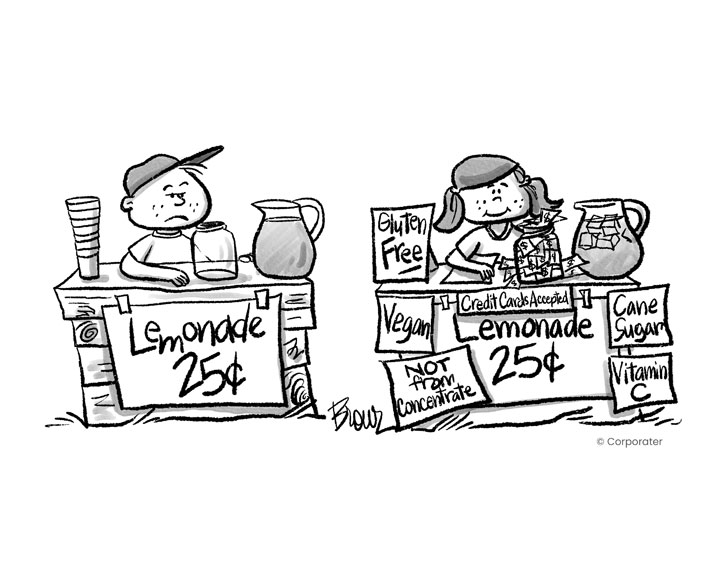
One of the most eye-opening findings we’ve ever come across in scanning business literature is this one, which identifies the often titanic-sized gap between perception and reality when it comes to what customers really think about a company’s products. Researchers surveyed executives across a range of industries and asked if they felt their product or service was differentiated from their competitors. Eighty percent replied in the affirmative, that yes indeed they did supply something different to the market. When the question was put to customers of those same products and services, however, a very different picture emerged. Just 8 percent of customers felt the offering was differentiated. Can you hear it? The sound of senior executives’ jaws dropping as the realization of just what a black hole they’re operating in finally hits them.
Differentiation is the original and ongoing battleground of competition in any industry. If your product or service is not distinct in some discernible way — either offering different attributes or providing the same attributes in a meaningfully superior way — there is little chance of separating yourself from the competitive herd. It’s like being a cover band in music. You can make a living imitating The Rolling Stones, but you’ll never top the charts. Here are a few things to consider when determining whether or not your product or service is truly differentiated.
- Ask your customers
In the spirit of the statistic shared above, the first thing you need to do is get the facts. Survey a subset of customers to determine whether they, the ones who actually give you money, feel your wares stand out from the crowd. What you find may surprise and shock you into action. - Map your value chain
This advice is straight from Harvard strategy guru Michael Porter, and you don’t need to read one of his lengthy tomes to take advantage of it. Simply examine the processes you employ for critical activities, including product or service design, production, sales, and support. Do they differentiate from your competitors in any kind of significant way? If not, it’s time to hit the whiteboard with ideas. - Look at the numbers
Hopefully, you’re tracking a balanced set of metrics across your organization that includes customer yardsticks. If so, examine the trends carefully. Market share, customer retention, customer satisfaction, net promoter score, and so on. If you’re seeing the needle move in the wrong direction on these and other indicators, chances are your products are no longer seen as differentiated in the eyes of customers.
To keep your customers from beating a path to your competitors, cast a critical eye on whether you really are differentiating in a consequential way. And to give the exercise the gravitas it deserves, keep in mind the words of Walmart founder, Sam Walton: “There is only one boss — the customer. And he can fire everybody in the company from the chairman on down simply by spending his money somewhere else.”

